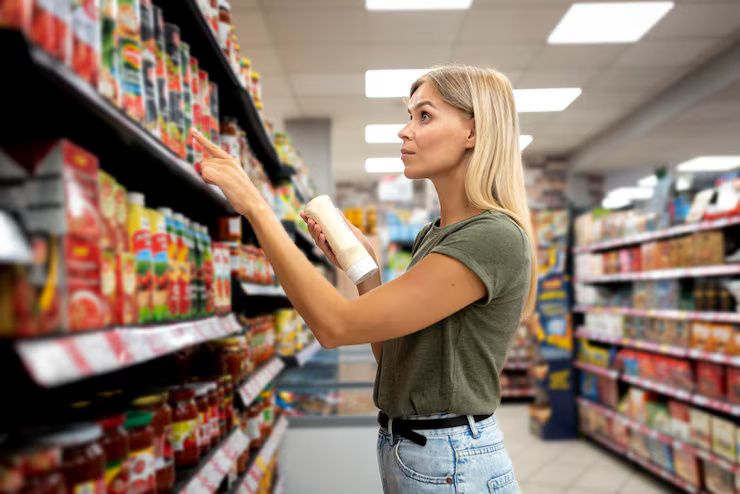Food labels are more than just packaging—they're tools for making informed and healthy choices. Whether you're aiming to lose weight, manage a health condition, or simply understand what you're eating, learning how to read and interpret food labels is an essential skill.
Understanding these labels helps you avoid excess sugar, sodium, and unhealthy fats, while also identifying nutritious ingredients and appropriate portion sizes.
Why understanding food labels matters today
In an age of processed and packaged foods, consumers often face confusing marketing claims like “low fat,” “sugar-free,” or “all-natural.” These terms can be misleading without context.
Reading food labels empowers individuals to:
-
Make healthier choices at the supermarket
-
Manage allergies or dietary restrictions
-
Avoid hidden sugars, salts, or trans fats
-
Compare products quickly and confidently
Increased awareness of personal health, growing rates of chronic illness (like diabetes and hypertension), and a surge in diet-related content online have made label reading a critical everyday skill.

Recent trends and updates in food labeling (2024–2025)
-
India's FSSAI (Food Safety and Standards Authority of India) rolled out new front-of-pack labelling guidelines in 2024 for packaged foods high in sugar, salt, or saturated fats.
-
Many countries, including the UK and Canada, have introduced warning symbols or traffic light systems to make labels easier to understand at a glance.
-
The U.S. FDA updated its nutrition label format in recent years to emphasize added sugars and realistic serving sizes.
These shifts reflect a global push toward transparency and health-first packaging.
What to look for on a food label
A typical food label has several key sections. Here's how to read each one:
Serving Size
-
Tells you the amount typically consumed in one sitting.
-
Important: All other numbers on the label are based on this amount.
Calories
-
Shows the energy provided per serving.
-
Helps in tracking your daily intake for weight management.
Macronutrients
| Nutrient | What to Know |
|---|---|
| Total Fat | Includes saturated and trans fats; aim for low saturated fat |
| Cholesterol | Keep intake low, especially for heart health |
| Sodium | High levels can increase blood pressure |
| Carbohydrates | Includes dietary fiber and sugars |
| Protein | Essential for muscle repair and growth |
Added Sugars
-
Look for “added sugars” separately listed under carbohydrates.
-
Too much added sugar is linked to obesity and diabetes.
% Daily Value (%DV)
-
Helps you see if a serving is high or low in a nutrient:
-
5% or less = low
-
20% or more = high
-
-
Based on a 2,000-calorie diet (average adult).
How to read the ingredient list
The ingredient list gives insight into what’s really inside the product:
-
Listed in descending order by weight (first = most used).
-
Watch out for hidden sugars (e.g., corn syrup, cane juice, dextrose).
-
Avoid products with hydrogenated oils (trans fats).
-
Look for whole ingredients: whole grains, fruits, vegetables, seeds.
Common labeling claims and what they actually mean
| Claim | What It Means (Typically) |
|---|---|
| “Sugar-free” | <0.5g of sugar per serving, may still have sweeteners |
| “Low fat” | ≤3g fat per serving, may have added sugar |
| “Light” | Usually fewer calories or fat than regular version |
| “Natural” | Not strictly regulated; check the ingredients |
| “Whole grain” | Should list whole grains as a main ingredient |
Key regulations and policies
Food labeling laws vary by country but are enforced by national health authorities:
-
India – FSSAI mandates color-coded labels for high-fat, sugar, or salt content (HFSS), and allergen disclosures.
-
USA – The FDA requires clear disclosure of added sugars, serving sizes, and allergen information.
-
EU – Nutrition labels are mandatory, and the “traffic light” system is recommended in many countries.
-
Australia/New Zealand – Use the Health Star Rating system to summarize a product's health value.
Knowing your region’s labeling laws can help you identify quality and safe products faster.
Tools and resources to decode food labels
Use these resources to better understand what you're eating:
-
FSSAI Eat Right India – eatrightindia.gov.in
-
U.S. FDA Food Labeling Guide – fda.gov/food
-
MyFitnessPal or HealthifyMe – Track nutrition by scanning product barcodes
-
Open Food Facts – App and website with global food label data
-
Label Insight – AI-powered label decoding for U.S. foods
FAQs about reading food labels
Q1. How do I know if a product is healthy?
Look for low saturated fat, sodium, and added sugar. High fiber and protein are also signs of a better choice. Ingredients should be mostly whole foods.
Q2. Are all food labels accurate?
Generally yes, but some variation (up to 20%) is legally allowed in some regions. Stick to trusted brands and regulated products.
Q3. What is the difference between “total sugar” and “added sugar”?
Total sugar includes both natural (e.g., fruit sugars) and added sugars. “Added sugar” refers only to sugars introduced during processing.
Q4. How can I compare two products using food labels?
Use per 100g or per serving values to compare key nutrients like calories, sodium, or fat side by side.
Q5. What’s the best way to avoid misleading labels?
Always read the ingredient list and the % Daily Value. Avoid buying based solely on claims like “natural” or “gluten-free.”
Final thoughts
Learning how to read food labels is a small habit that leads to major health benefits. By understanding ingredients, nutrient values, and serving sizes, you can:
-
Avoid processed or unhealthy food
-
Control your portion sizes and calorie intake
-
Manage chronic health conditions more effectively
-
Choose products that support long-term wellness
Next time you’re at the grocery store, take a minute to flip the package around—your best food decisions are found on the back, not the front.
